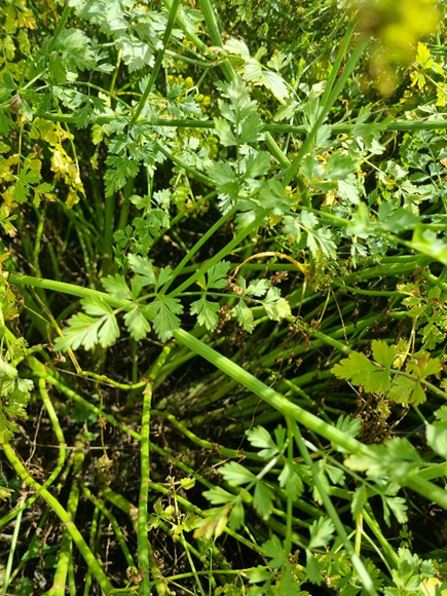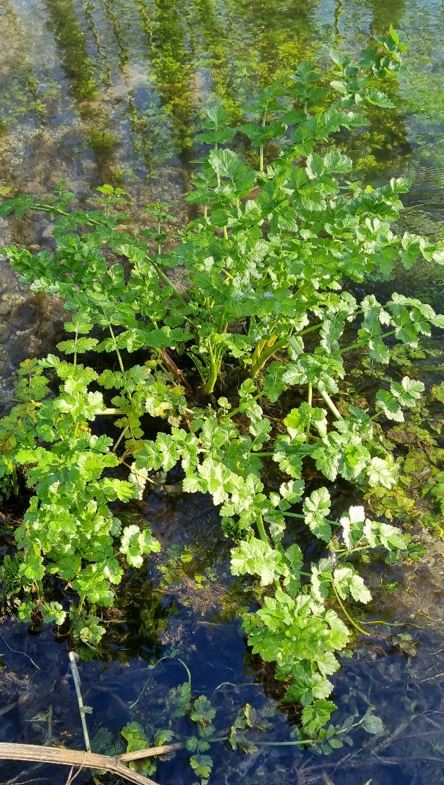In the lush, verdant landscapes of the United Kingdom, a deadly beauty lurks, often unseen and misunderstood. Hemlock Water Dropwort, a native perennial plant, casts an alluring yet treacherous presence in streams, ditches, and wet grounds, reaching a majestic height of up to 150cm. However, behind its picturesque facade lies a potent peril, as it holds the title of the most poisonous wild plant in the UK.



Understanding Hemlock Water Dropwort
Despite its name, Hemlock Water Dropwort shares little botanical similarity with its infamous cousin, Poison Hemlock. While both belong to the Carrot family, their genetic paths diverge significantly. Hemlock Water Dropwort, scientifically classified as Oenanthe crocata, distinguishes itself with its hollow, ribbed stems and pinnate leaves, resembling the delicate foliage of Coriander or Flat-Leaved Parsley. Its delicate white flowers, arranged in small umbellet clumps atop widely-spaced ribbed stalks, add to its ethereal charm.
Botanic Classification and Naming
Within the Carrot (Apiaceae) family, Hemlock Water Dropwort carves its niche. Its genus name, ‘Oenanthe,’ signifies its classification as a Water Dropwort, while ‘crocata’ denotes its crocus-like yellow seed capsules, hinting at its botanical intricacies.
Concerns and Dangers
Despite its enchanting appearance, every part of Hemlock Water Dropwort harbours lethal toxins, with the leaves and parsnip-like tubers containing the highest concentrations. Ingestion, even in minuscule amounts, can lead to severe illness, respiratory failure, or worse, death. Tragically, misidentification remains a prevalent danger, as foragers often mistake Hemlock Water Dropwort for innocuous herbs like Flat-Leaved Parsley, Water Celery, or Water Parsnip, with fatal consequences.
Description and Identification
Standing tall with a distinct parsley scent, Hemlock Water Dropwort reaches heights of 1.5 metres, its stem characterised by hollowness. Basal leaves, deeply divided into 3 to 4 pinnate structures, bear broad oval or rounded leaflets, while stem leaves, with 2 to 3 pinnate formations, feature narrower segments. Delicate white flowers, mere 2 mm in size, form umbels with 10 to 40 rays, their slender elegance contrasting with the plant’s deadly nature.

Challenges in Identification
Identifying Hemlock Water Dropwort demands meticulous attention, as its resemblance to other species can lead to fatal errors. Careful examination of its pinnate leaves, characterised by ovate or rounded segments, and terminal umbels with longer peduncles than rays, provides crucial cues for accurate identification. Southwick Country Park Nature Reserve gives a great account of how to identify the plant.
Habitat and Seasonality
Thriving in canal margins, waterside areas, and damp habitats, Hemlock Water Dropwort asserts its presence from June to August, when its delicate blooms grace the landscape with ephemeral beauty.
Life History and Conservation Status
As a perennial species, Hemlock Water Dropwort perseveres through the seasons, its presence extending across southern and western Britain, albeit with scarcity elsewhere. In VC55 regions, it exhibits a near-scarce status, though recent observations suggest a potential expansion of its range.
Recording and Monitoring
Documenting Hemlock Water Dropwort sightings proves invaluable for conservation efforts, aiding in tracking its distribution and population dynamics. Photographs capturing the plant in its habitat, showcasing its distinctive leaves and floral structures, serve as vital records for monitoring its presence and abundance.
Conclusion
In the intricate tapestry of the UK’s botanical landscape, Hemlock Water Dropwort stands as a poignant reminder of nature’s dualities – its breathtaking beauty juxtaposed with its deadly potency. Understanding and respecting the perils it poses is paramount, ensuring that amidst its allure, safety prevails, and lives are safeguarded from the silent threat that Hemlock Water Dropwort embodies.
Resources:
Species guide https://species.nbnatlas.org/species/NBNSYS0000003693#overview
Nature spot https://www.naturespot.org.uk/species/hemlock-water-dropwort
RHS https://www.rhs.org.uk/plants/11723/oenanthe-crocata/details
The Postcode Areas We Serve
Gloucester and Swindon
Birmingham and the Midlands
Bristol and the South West
Cardiff and South Wales










